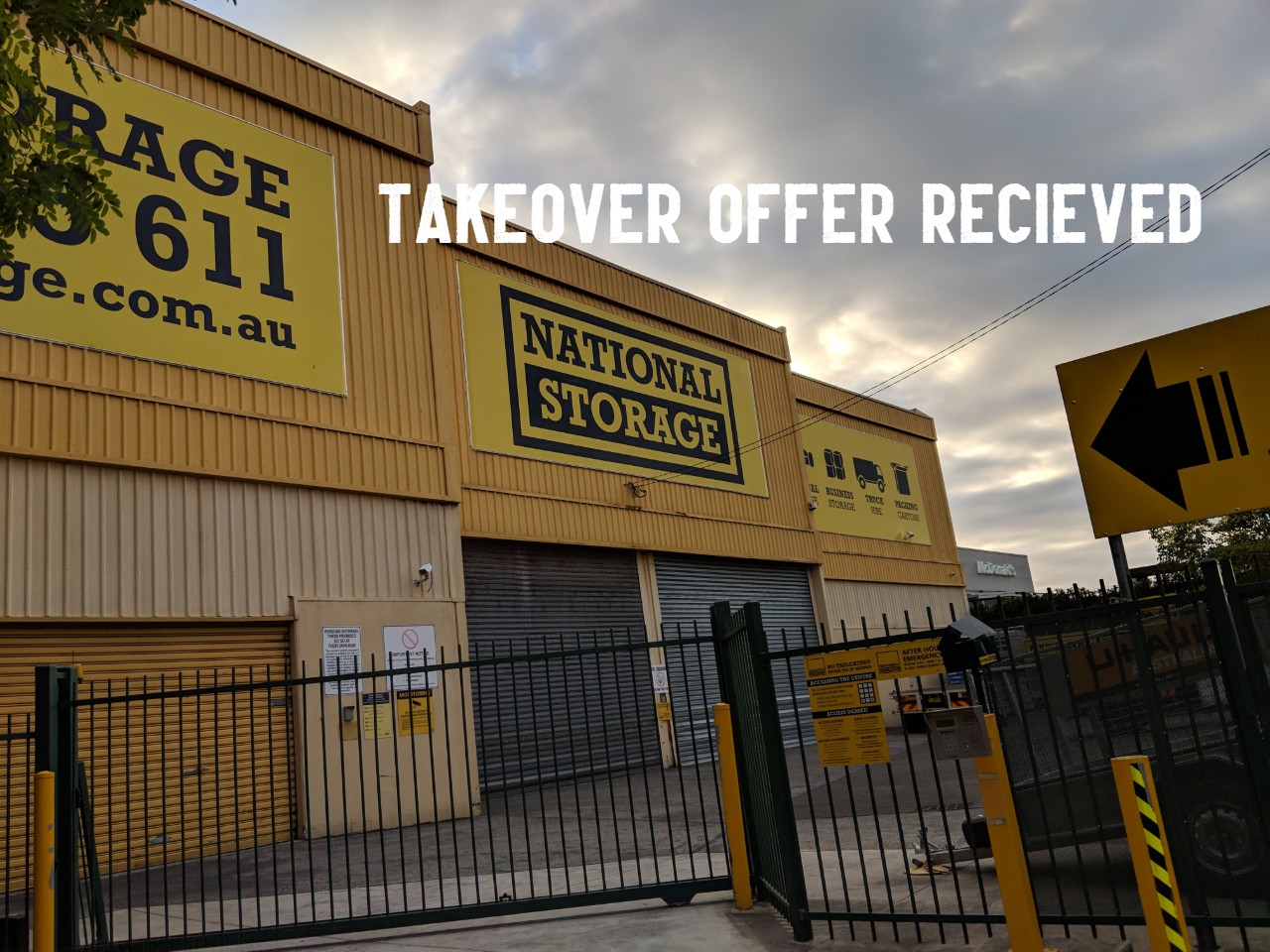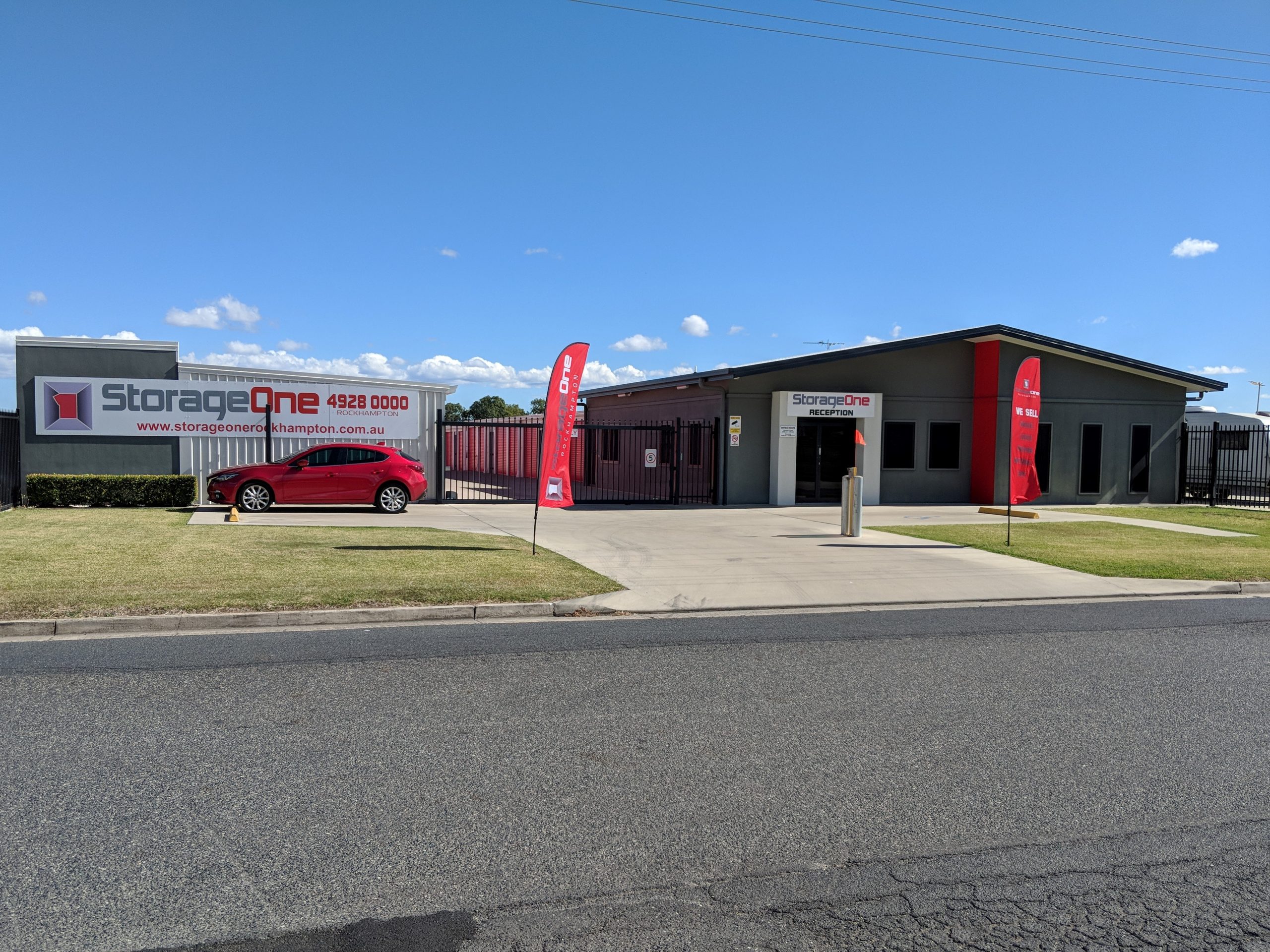Investing for immediate holding income
All investments – Fractionalised & Freeholds
In April 2018 the Brothers Sporting Club freehold in Bundaberg was offered for sale with a leaseback. The club itself, founded in 1947, offered an established entertainment and sporting facility inclusive of two restaurants, a café, gaming & sports bar, beer garden, auditorium, conference centre and sporting fields all…
The redevelopment of the old wharf & site Hamilton is a magnificent example of what can occur when thoughtful urban design creates a precinct which is great to live, work and invest. “Northshore Hamilton” is a Queensland Government inspired redevelopment of 300 hectares of land previously used as a…
This is a good story about increasing interest rates and a compelling proposal we recently put to a self-storage owner operator. So, on the one hand we have fund manager who is wanting to acquire existing self-storage facilities, and the other, a Sydney Metro self-storage owner operator of ten trading…
This property was offered as a fractionised investment in April 2022 This trendy little Bowen Hills office, was acquired to provide investors with reliable income & growth over the term of the investment. Wholesale Investors were able to access the investment for mulitples of $100,000 each. The property was acquired…
Self-storage businesses are stable, passive and in demand. The self-storage industry has grown from a cottage industry in the 1980s, where families would build and manage an independent facility, to a billion-dollar industry increasingly dominated by large companies that manage and own facilities. There are around 1000 self-storage facilities Australia-wide.…
[caption id="attachment_3752" align="alignnone" width="2560"] Morayfield auto centre[/caption] Today in Morayfield stands this newly built cutting edge highway property service centre. We committed Taco Bells & United Petrol to the site to fit alongside the existing Anaconda. Prior to that, stood a 20 year old homemaker centre with showrooms vacant…
Self-storage businesses are stable, passive and in demand. The self-storage industry has grown from a cottage industry in the 1980s, where families would build and manage an independent facility, to a billion-dollar industry increasingly dominated by large companies that manage and own facilities. There are around 1000 self-storage facilities…
This property was offered as a fractionised investment in March 2021 These 3 industrial property holdings were acquired to provide investors with reliable income & growth over the term of each of the investments. Wholesale Investors were able to access the investment for mulitples of $100,000 each. The first two…
This property was offered as a fractionised investment in November 2020 This prominent warehouse was acquired to provide investors with reliable income & growth over the term of the investment. Wholesale-Investors were able to access the investment for mulitples of $100,000 each. Wellcamp, is in the heart of south-east Queensland’s…
According the the AFR on May 15, the Abacus buy up of shares is back on again! If this results in a controlling interest, I don't see it as a good thing for our independent self storage owner clients. Abacus have built up a 7% shareholding in National, taking advantage…
This investment was acquired in September 2020 The prominent warehouse was acquired to provide investors with reliable income & growth over the term of the investment. This warehouse, with a lease to the Queensland government for this modern office warehouse facility 21-31 Markwell Place Mount St John (Townsville)The property is…
This investment was acquired in August 2020 This prominent warehouse was acquired to provide investors with reliable income & growth over the term of the investment. Wholesale-Investors were able to access the investment for mulitples of $100,000 each. The property is situated about half way between Brisbane and the Gold…
This property was acquired in May 2020 The property was acquired to provide investors with reliable income & growth over the term of the investment. Wholesale-Investors were able to access the investment for mulitples of $250,000 each and the freehold & leasehold details are below. The centre comprises a lettable…
Airport Storage & Parking in Marcoola on the Sunshine Coast sold in December 2017. Back in early 2017 when I first spoke with the owners, we discussed my recommendations as to sale format, optimal timing, finding the likely buyers and the best price strategy. We explored valuation concerns,…
The Cardinia Club was acquired in March 2019 to be offered as a fractionised co-investment This established hospitatlity facility with a sports bar, bistro, TAB gaming and function centre was acquired for investors in March of 2019. It was located in Pakenham Victoria an was acquired because the fund managers,considered…
Storageone Rockhampton sold in October 2018 The result was the culmination of a campaign which saw more than 50 interested buyers and 4 offers competing for this fabulous property. When the owners of Storageone Rockhampton wanted to offer their immaculate, near new, Steel Storage built 3-year-old facility with around 300…
North Lakes building fetches close to $6.75M The prominent warehouse was acquired for a new fractionised investment in February 2017. The investment was acquired to provide investors with reliable income & growth over the term of the investment. Wholesale-Investors were able to access the investment for mulitples of $100,000 each.…
Sometimes fund managers decide not to sell the property holdings at the end of the investing term because the property is just too good. This happened to this amazing property in South Australia, where the fund manager, gave investors who wanted to withdraw from the investment the ability to exit…
This Campbellfield warehouse was acquired and offered as a fractionised investment in August 2015 This Cambellfield warehouse was bought for just under $5 million. The warehouse, at 1551 Sydney Rd Cambellfield, is on 20,000 m2 of land and includes an existing building of just under 10,000 m2. The plan…
This newly built Quest Hotel was acquired to be offered as a new fractionised co-investment These property was acquired to provide investors with reliable income & growth over the term of each of the investments. Wholesale-Investors were able to access the investment for mulitples of $50,000 each. The property, built…
Co-investment Overview
1. Let’s start at the beginning: what is Co-investment?
If you’ve been wondering: what is co-investment? —you’ve come to the right place.
Co-investment is a type of investment that has compelling benefits for individual investors. Most investors are accustomed to the idea of buying shares. When you own a share in a company, that means you own a proportion of that company, and are entitled to a slice of its profits and assets.
Co-investing is similar: it’s when a group of investors pool their money to buy a substantial property investment, and each investor then has a financial interest in part of the property. The ownership entities are called either Syndicates or Real Estate Investment Trusts (REITs)
Syndicates & REITs normally run for a defined term, after which it is wound up and the property sold or re-packaged into another co-investment. Typically, an investment is wound up after 5-7 years.
Individuals who invest in a company are called “shareholders”; whereas, individuals who co-invest are usually called “unit holders” in the case of a REIT’s or “shareholders” in the case of a syndicate. Irrespective, investors are issued unit certificates once their offer to invest is accepted and investment is received.
Just like shareholders receive dividends from profits and a capital return if they sell their shares, in co-investment, unit or shareholders receive distributions from rental income and a capital return upon the winding up of the syndicate.


2. The Benefits of Co-Investment
It’s easy to answer the question: what is co-investment? A more important question, though, is this one: why should you consider co- investing with others?
In general, the benefits of co-investment meet many objectives for investors: secure, reliable investments that generate recurring income and enable diversification of holdings.
Small REITs & property syndicates are an ideal way to meet these requirements, and are a great way to build a self-managed investment portfolio.

3. Access to commercial, retail, industrial or hospitality properties
Not many individual investors can buy an $8 million hotel or a $20 million shopping centre all by themselves. Co-investment, though, offers the opportunity for individuals to do just that! Often the properties chosen for commercial property investment syndication are of a very high quality: multi-tenanted with excellent tenants, long leases, and offering the prospect of above-average returns or capital growth opportunities. When a group of investors pool their capital into either a REIT or syndicate, they CAN afford a share in these better-quality properties with very competitive returns. Better quality properties are simply better investments. They maximise income reliability and capital security.
Some commercial property REIT’s might have over 100 investors; small property syndicates generally have up to 10 investors. We only deal in co-investments that will have no more than 50 investors.


4. Possible impressive returns
The returns from co- investing often surpass those received from bank deposits, share dividends or ordinary freehold property investments, although returns differ with each. Residential property syndicates usually offer lower returns than commercial property syndicates but their potential for capital gain is often higher.

5. Regular income distributions
Unit & shareholder who invest usually receive distribution income every three months, although some syndicates distribute monthly. Monthly distributions are particularly attractive to investors who re-invest these distributions into other investments to take advantage of compounding their returns.
Income returns also have the advantage of being net amounts: any expenses that are incurred in running the syndicate have already been deducted.


6. Capital gain potential on sale of the property
On occasion, investors have made a capital gain or received an extraordinary distribution (in addition to the regular dividends) on the winding up of the investment. Not every investment makes this additional profit upon winding up, though in my experience, it’s not uncommon. As discussed below, capital losses can also occur. Fortunately we have seen few of these for our investors but this is one of the reasons it’s vital to choose an experienced manager.

7. Shared risk among investors.
Every kind of investing carries risk, and extraordinary adverse events which affect the workings of an investment do sometimes occur. When you co-invest, however, risk is shared across numerous investors. This is a huge advantage compared to outright ownership of a commercial property, where one investor bears all the financial risk.
As an extreme example, Covid-19 appeared in early 2020 and many businesses such as clubs and pubs were forced to cease trading altogether and therefore couldn’t sustain rentals. The flow-on effect was that investors who held a co- investment in clubs and pubs had to forego income distributions for a time. When these investments were held in property syndication, the financial damage was shared across numerous investors rather than just the one owner, who would have had to bear the total brunt of the loss of rental and perhaps, sadly, even the default of the tenant.


8. Diversification
Our subscribers receive a regular flow of information about new properties to be offered for co-investment, with participation in each being entirely optional. We have seen our most canny investors to build their own portfolio and diversity across numerous investments. This diversification can be across different types of properties, for example, industrial, retail, commercial, residential or hospitality. Some of our subscribers choose to diversify by state, or by demographic area, or by urban and regional centres.
When investing in property syndication, it’s easy to tailor a portfolio that suits your specific investment needs. The power rests entirely with you.

9. Professionally managed
It’s not unusual for freehold property owners to be overwhelmed by the relentless management requirements that comes with owning property. Lease management and negotiations, property maintenance, government requirements, regulatory matters and maximising additional profit opportunities can be a full-time job. Co-investments are managed by professional teams on the investor’s behalf, which look after all these. This means that co-investments are a mostly passive investments.
In addition, most commercial properties that we assess for property syndication are to be acquired by licensed managers. This means that managers have an investment license and need to comply with all government requirements governing their activities. While a license itself is not an absolute guarantee for investors, it does provide a statutory benchmark for disclosures and undertakings. The manager should display their ASIC license number on all information publications.


10. Extensive investment disclosure, or PDS
With each investment that we are involved, the manager will outline all features in a proposal document, called a Product Disclosure Statement (PDS). We like to call this document an investment proposal because that is exactly what it is. The PDS will outline the expected features and benefits of investing in the syndicate over the duration of the investment and explain the calculations that the manager has made to predict the co-investment’s projected income and capital security.
The PDS will likely address issues like the expected population growth and demographic changes of the property’s location, nearby relevant infrastructure upgrades, and extrapolated growth of the tenant’s area of business. It should also outline possible risks to the investment and the precautions the syndicate manager will take to mitigate these risks in our dynamic world. Budgetable expenses such as the depreciation of plant and equipment and associated replacement costs, and tenancy default and re-leasing strategies should also be mentioned here. In short, a PDS acts as a kind of agreement or charter, so everyone is clear about the details of the proposed investment. On saying this, there is no guarantee that it will be successful in achieving its investment targets and objectives.

11. Co-investment essentials: choosing a great property
The most common reason property investments underperform is this: the property itself simply isn’t good enough.
That’s why the most important factor in determining whether an investment is worthy of your consideration is the quality of the property.
Investors should choose properties that have excellent construction values, quality plant and equipment, and of course, a superior location.
Choosing a great property is a multifactorial decision, but if pushed to single-out the two most important investment features, they are these: we like investments which are versatile and/or tenanted securely or with multiple tenants.


Versatile
We like versatile properties because they provide our investors with additional potential if the property needs to be re-developed or extended to suit future needs.
Over time, buildings need to be adapted to suit the changing requirements of tenants. Covid19 showed what can happen when change occurs quickly. We saw a fast adjustment in working arrangements as a large proportion of the workforce stopped working in commercial offices and began working from home. This had a knock-on effect to local shopping centres, which received a surge in spending, and boosted the need for more local services. The turnover of supermarket increased, as did that of specialty retailers and services such as childcare and medical and allied health centres.
Investment property owners needed to quickly assess the impact of this change on all categories of property and frequently were forced to scramble for solutions. Contactless access, for example, without the use of lift buttons and doors handles, became important. Some centres needed to be re-formatted for different tenants, to accommodate more support services such as childcare & personal services.
These changes are in addition to our medium-term challenges of providing tenants with buildings that are not-only energy efficient, but also have the potential of generating sustainable energy.
Investment properties that are land-rich, also, give co-investments more flexibility in being able to change a building to keep a tenant or securely re-tenant a site, which also increases the property’s value.

Tenanted securely or with multiple tenants
We also like properties which are either tenanted securely or that have multiple tenants. For us, securely tenanted properties mean those with long-leases and/or quality tenants like government agencies. Multi-tenanted investments, like homemaker centres and suburban office blocks, have been star performers over the last few decades. Self-storage complexes, which might have up to 1000 storers paying monthly rent, are the gold-standard for providing reliable income. Although numerous tenants increase the need for management, having multiple sources of rent spreads the income risk. The property might lose one tenant, or maybe more than one. If there are numerous tenants, though, the property can still generate an income. And of course, if a property’s income is reliable, the value of the property, and the investor’s capital, is more likely to remain intact and in fact grow.


Choosing a great manager
The quality of the manager is vital to the quality of the co-investment. Co-investors must make the right decisions at the right time in order to maximise the return to the investors. Smart management will spot opportunities, like the potential for further development of the building, and risks, like potential tenancy issues. Sometimes selling the property earlier than expected may be a great opportunity to snap a capital gain or the only remedy to a problem that the manager can foresee down the track. A professional manager will also ensure that there is adequate and relevant insurance for the property.
In summary, excellent managers will make tough, constant and considered decisions when they need to be made.

Understanding the realities of investing
In every type of investing, there are times where the investment plan does not work out the way it was intended. This is true for freehold property investing, as well as for shares, stocks, bonds, and other financial instruments.
Co-investments are no different: there can be interruptions to income distributions caused by tenant defaults, rental holidays or maintenance issues. There is always the potential for a capital loss, which will affect the value of the capital originally invested. None of these issues are pleasant! Prudent investment at the beginning, though, can usually avoid exposure to many potential problems.
Of course, the greatest protection is the diversification of an investment portfolio with different types of properties.


Co-investment gives us the ability to invest where the new opportunities are happening
The world today seems to be changing faster than we have ever seen. In the first few months of this decade alone, we have seen a surge in online retailing, a contraction of people travelling to workplaces, and meetings taking place on Zoom instead of in person.
All of this is unsettling, but canny investors will consider these trends as opportunities.
Specific industrial property will prosper: with the surge in online shopping and the disruption of supply caused by geopolitical issues, we think the future looks bright for industrial property used for storage. As the climate warms, it’s logical to envisage indoor food production and cold storage becoming highly valued.
Co-investment can give us the ability to divert and diversify our investment quickly, if need be.
Well, there you have it! Co-investment is an exciting and growing part of many investors’ portfolio structure with so many advantages over owning a property exclusive by yourself.

The advantages selling your property for co-investment
Selling your property for co-investment has many advantages for sellers. In fact, it makes the traditional sale & settlement look very ordinary in comparison.
Here is a summary of the main attractions
1. It can facilitate access to the future rents & profits of the property, after settlement.
2. It can facilitate access to capital or reduction of debt
3. It can introduce management expertise to enhance future growth or further development
4. It can give you a say in the future refurbishment & direction of the property without having full financial exposure.
Simply put, if sellers believe the property has good prospects co-investment enables you to participate in the property’s future as if you still owned it. Selling a property today can be challenging decision particularly if there are excellent prospects.
There may be future rental uplifts or external factors such as pivotal government infrastructure underway which will enhance the utility of the property and therefore may enhance the value in your property.
Perhaps you may be an owner occupier with a continued need to use the property but could use the release of some additional capital retained in the properties ownership to be re-invested into other areas. And we have had other situations where the property has had enticing redevelopment opportunities and further capital & expertise is required make it happen.
Whatever it is, a solution could simply be the introduction of a co-investment group who will structure the a solution which gives you immediate release of equity and still leaves you a financial interest in your property. And best of all, your remaining financial interest will entitle you to any rents and future profits along the way.
Please see our lists of co-investment property case studies here.




















